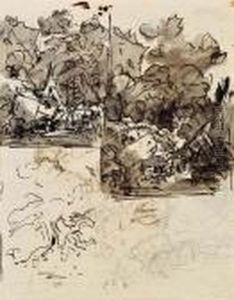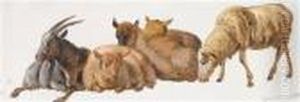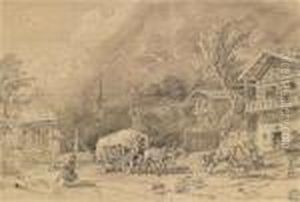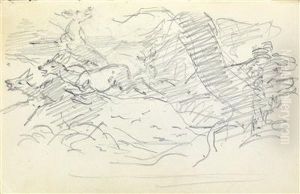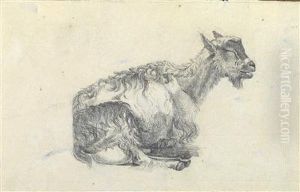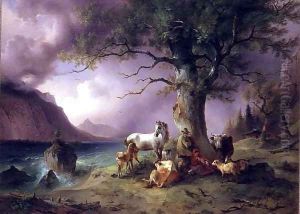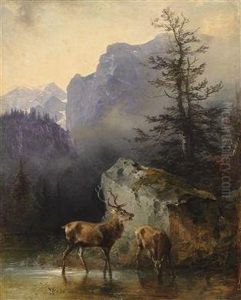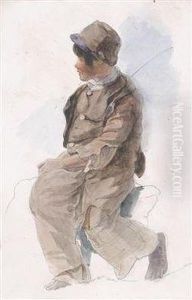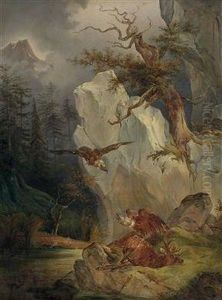Friedrich Gauermann Paintings
Friedrich Gauermann was an Austrian painter, born on September 10, 1807, in Scheuchenstein, a small village in Lower Austria. He was the son of the landscape painter Jacob Gauermann, from whom he received his first instruction in the arts. Friedrich's talent became evident at an early age, and he soon developed a strong affinity for painting nature, animals, and rural life with a remarkable sense of detail and realism.
Gauermann studied at the Academy of Fine Arts Vienna and was influenced by the works of old masters as well as contemporary artists. His early works were primarily landscapes, but he gradually shifted his focus to include more animal studies and genre scenes, often depicting the harsh realities of peasant life. He gained recognition for his ability to capture the interplay of light and shadow, and his paintings were admired for their vividness and precision.
Throughout his career, Gauermann traveled extensively across the Austrian Empire, including the Alps and the surrounding countryside, where he found inspiration for many of his works. He was particularly adept at rendering the textures of fur and foliage, which added a tactile quality to his paintings. This attention to detail earned him the esteem of both critics and patrons, and his works were frequently exhibited in Vienna and other European cities.
Despite his success, Friedrich Gauermann remained deeply attached to the rural landscapes of his childhood, and this connection is evident in the authenticity and warmth of his compositions. His paintings often feature dramatic weather conditions and the rugged beauty of the natural world, reflecting his profound respect for nature.
Friedrich Gauermann's contributions to Austrian art were significant, and he is considered one of the key figures in the Biedermeier period, a cultural movement in the German-speaking states of Europe during the early to mid-19th century. His works continue to be appreciated for their technical skill, emotional depth, and detailed portrayal of rural life.
Gauermann's health deteriorated later in life, and he passed away on July 7, 1862, in Miesenbach, Austria. Today, his legacy lives on, and his paintings can be found in numerous art collections and museums, including the Österreichische Galerie Belvedere in Vienna. His dedication to capturing the essence of the Austrian countryside has left a lasting impact on the art world and continues to inspire artists and art lovers alike.



















